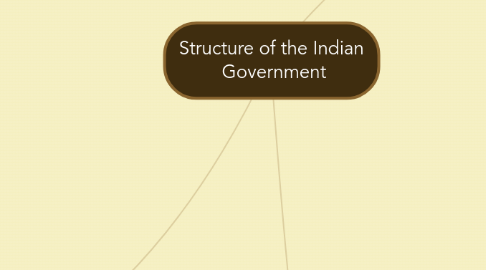
1. Local Self Government
1.1. Rural
1.1.1. Block Panchayat
1.1.1.1. Composition
1.1.1.1.1. Sarpanch of all panchayats
1.1.1.1.2. MLAs and MPs of the area
1.1.1.1.3. Electred members of Zila Parishad
1.1.1.1.4. The chairperson of the town area commities
1.1.1.1.5. The representatives of scheduled castes, tribes, and cooperative societies
1.1.1.1.6. 1/3 seats are reserved for women
1.1.1.2. Functions
1.1.1.2.1. The oversee the functions of panchayats
1.1.1.2.2. To provide farmers with irrigation facilities, seeds and teaches them the latest methods of cultivation
1.1.1.2.3. To provide technical and financial assistance to farmers
1.1.1.2.4. To setup cottage and small scale industries in villages
1.1.1.3. Sources of income
1.1.1.3.1. Allotted by state governement
1.1.2. Zila Parishad
1.1.2.1. Composition
1.1.2.1.1. All chairmen of the panchayat samitis
1.1.2.1.2. Members of the state legislative assmebly
1.1.2.1.3. Members of parliament elected from the district
1.1.2.1.4. Representatives of Scheduled casts, tribes and women
1.1.2.1.5. Important officers like district collectors, district judges and police officers
1.1.2.1.6. Chairmen of the municipalities of the district
1.1.2.2. Functions
1.1.2.2.1. Supervising the work of the Panchayat Samitis
1.1.2.2.2. Developing the district
1.1.2.2.3. Promoting education
1.1.2.2.4. Taking care of public health
1.1.2.3. Sources of Income
1.1.2.3.1. Taxes paid by factories
1.1.2.3.2. Funds given by state and central governements
1.1.2.3.3. Taxes paid on land houses and water
1.1.3. Gram Panchayat
1.1.3.1. Gram Panchayat
1.1.3.1.1. Members
1.1.3.1.2. Tenure
1.1.3.1.3. Functions
1.1.3.1.4. Sources of Income
1.1.3.1.5. Reservation of Seats
1.1.3.2. Gram Sabha
1.1.3.2.1. Functions
1.1.3.3. Nyaya Panchayat
1.1.3.3.1. Function
1.2. Urban
2. Union or central Government
2.1. Judiciary
2.1.1. Chief Justice of India & other Supreme Court judges
2.1.1.1. The Chief Justice and other SC judges are appointed by a collegium system of judges
2.2. Legislative
2.2.1. Rajya Sabha
2.2.1.1. There are 245 members
2.2.1.2. Council of states
2.2.1.3. Elected directly
2.2.2. Lok Sabha
2.2.2.1. House of Commons
2.2.2.2. There are 545 members
2.2.2.3. Out of 545 members, two represent the anglo- Indian community
2.3. Executive
2.3.1. The Prime Minister of India appoints a set of cabinet ministers from either the Lok Sabha or the Rajya Sabha
2.3.2. Responsible for the day-to day mana- gement of the country
2.3.3. The Chief Justice and other SC judges are appointed by a collegium system of judges
2.3.4. President is elected by the Lok Sabha and the Rajya Sabha
3. The State Government
3.1. Executive
3.1.1. Governor
3.1.2. Chief Minister
3.1.2.1. Has full control over the state
3.1.2.2. Chooses a set of cabinet ministers
3.1.2.3. CM chooses his/her cabinet from the members of State Legislature. CM can choose his/her ministers from either Vidhan Parishad
3.2. Judiciary
3.2.1. Chief Justice of High Court & other High Court judges
3.2.2. The Chief Justice and other HC judges are appointed by a collegium system of judges
3.3. Legislature
3.3.1. Vidhan Sabha
3.3.1.1. Elected directly by the state by secret ballot
3.3.1.2. State legislative assembly
3.3.1.3. Two members from the Anglo-Indian community are nominated by the Indian government
3.3.2. Vidhan Parishad
3.3.2.1. Legislative Council
3.3.2.2. One third members are elected by the State L- egislative Assembly
3.3.2.3. 1/6 are nominated by the governor
3.3.2.4. 1/12 are elected by teachers
3.3.2.5. 1/12 are elected by grad- uates
